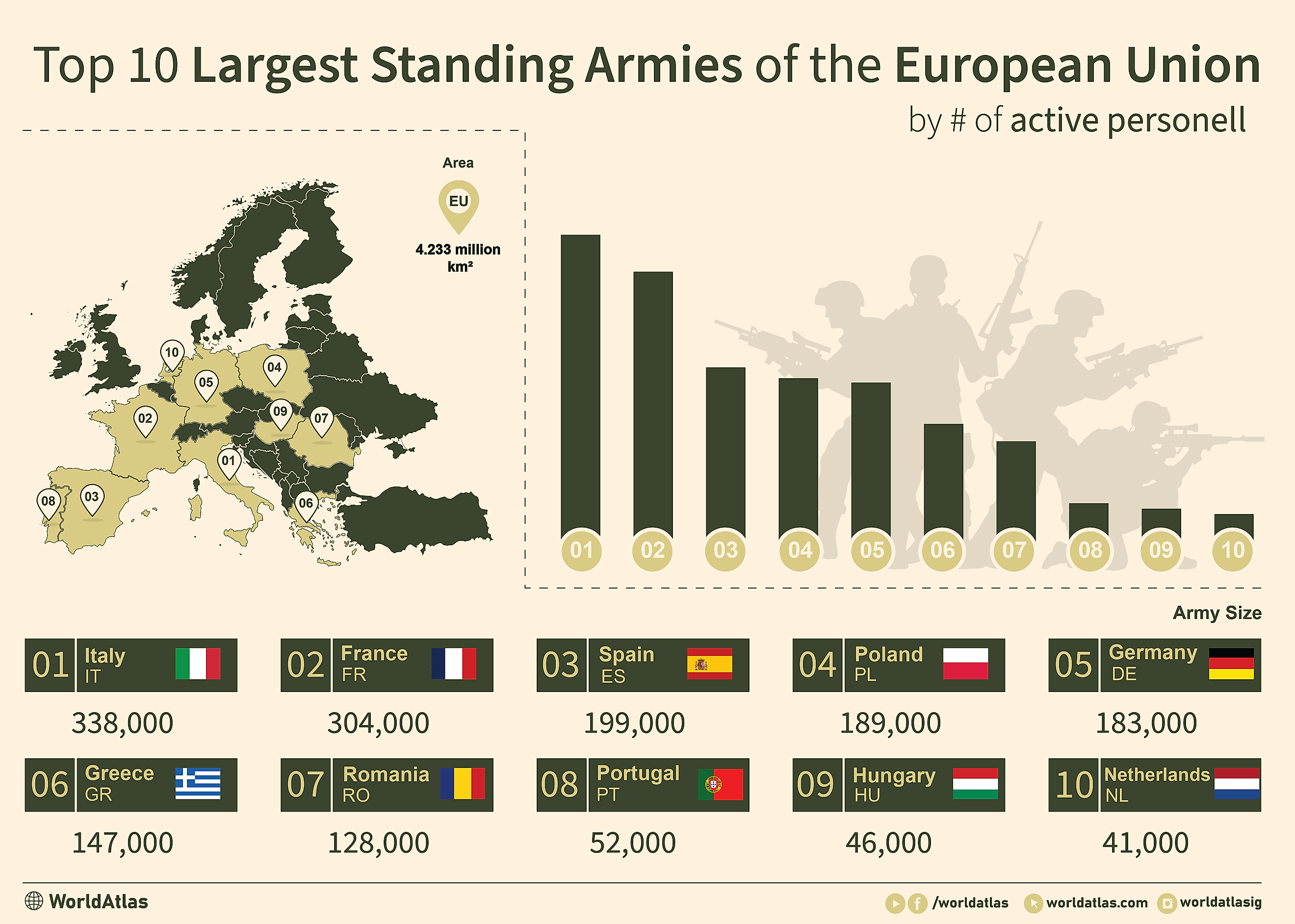
The Largest Standing Armies of the European Union
The European Union was formed in 1993 to enhance the political and economic cohesion between European countries. Most founding members adopted a new currency, the euro. EU members also work closely together on issues surrounding immigration and legal matters.
While there is no official military wing of the European Union, there has been increasing cooperation of member states militaries in the last decade. The recent invasion of Ukraine in 2022 has only accelerated this. The largest armies within the European Union are Italy with 338,00 active personnel, France with 304,000 active personnel, and Spain with 199,000 active personnel.
Top 10 Largest Standing Militaries Of The European Union
| Rank | Country | Army Size |
|---|---|---|
| 1 | Italy | 338,000 |
| 2 | France | 304,000 |
| 3 | Spain | 199,000 |
| 4 | Poland | 189,000 |
| 5 | Germany | 183,000 |
| 6 | Greece | 147,000 |
| 7 | Romania | 128,000 |
| 8 | Portugal | 52,000 |
| 9 | Hungary | 46,000 |
| 10 | Netherlands | 41,000 |
1. Italy - 388,000
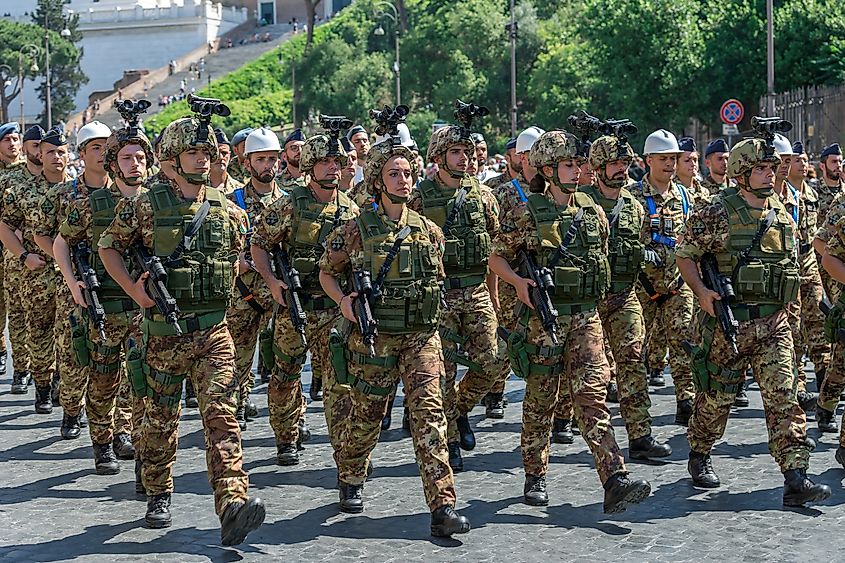
A surprise to some is that Italy has the largest army in the EU. With roughly 338,000 active members, the Italian military boasts a sizeable army of around 100,000 soldiers, a robust navy, and a capable air force.
Military service in Italy used to be obligatory for all men, but this was officially ended in 2004 and now operates as a strictly volunteer force. The Italian military manufactures much of its own arms and equipment while also importing tanks, ships, and fighter jets from countries like France, Germany, and the United States.
2. France - 304,000
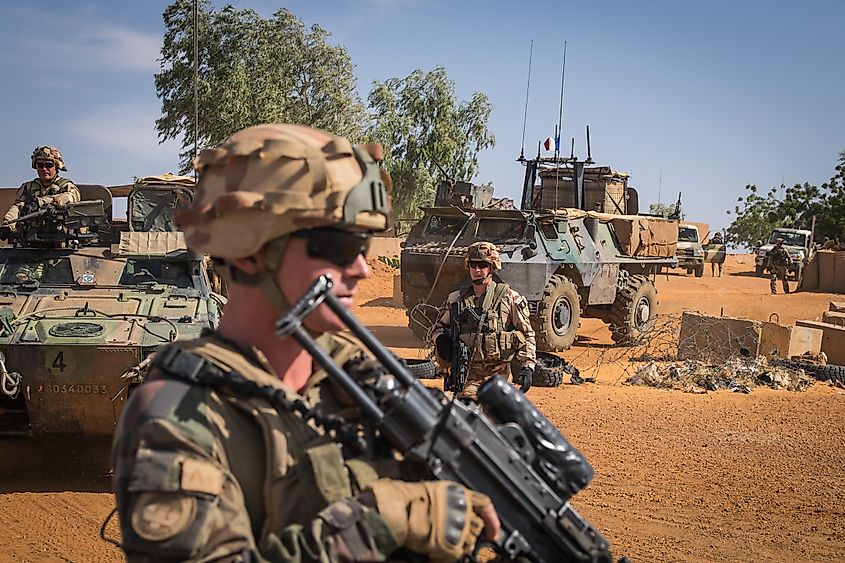
Although falling short as the largest military numerically, it is broadly accepted that France has the most powerful military in the EU due to its nuclear capabilities. The French Air Force and Navy are nothing to sneer at, either.
France is famously self-reliant regarding supplying its military with arms and equipment. Nearly everything that is used within the French military is made within France itself. This means in the event of a war, the French military will be able to operate completely independently and not rely on others to fuel the war effort.
3. Spain - 199,000
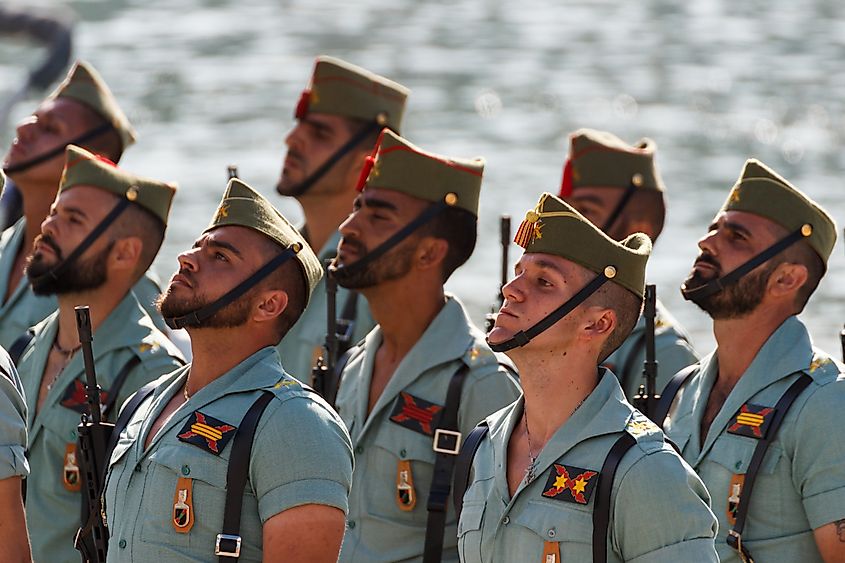
The Spanish military is entirely volunteer. In 2001, Spain abolished conscription. The Spanish military's might can be found within its relatively large standing army and impressive air force.
Spanish soldiers are equipped with state-of-the-art weapons, most of which are imported from Germany. Its airforce has a total of 517 aircraft, 140 of which are fighter jets. Spain also has a significant helicopter fleet of 126.
4. Poland - 189,000
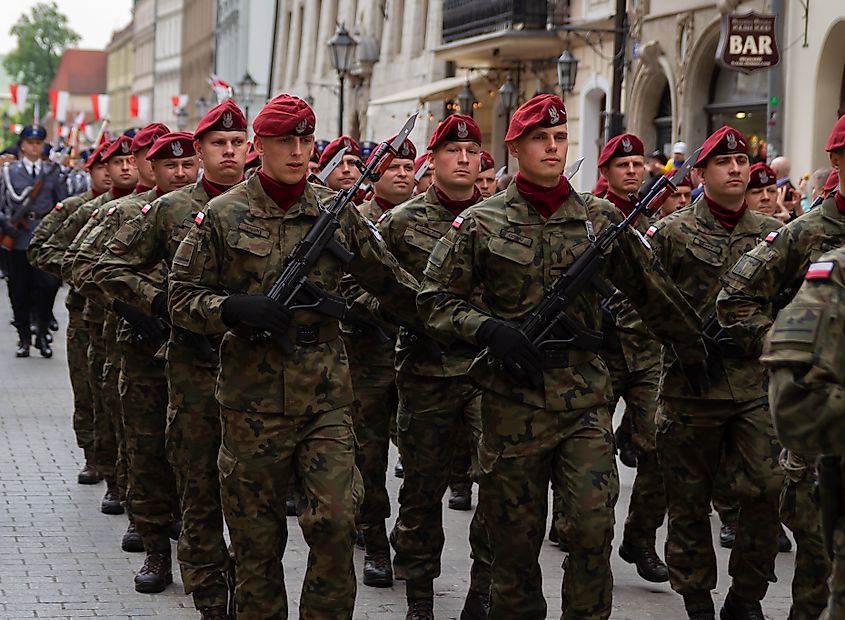
Poland's military is experiencing a transformational period in its history. At the outbreak of the Ukraine War, the Polish government increased its military budget and launched a massive recruitment campaign. By 2035, Poland hopes to field a standing army of around 300,000 troops.
Poland has also placed large orders of weapons and armaments from Germany, the United States, and South Korea in hopes of modernizing where it counts. Some segments of its military still use some of the older and outdated equipment from the Soviet era, but this could change very soon.
5. Germany - 183,000
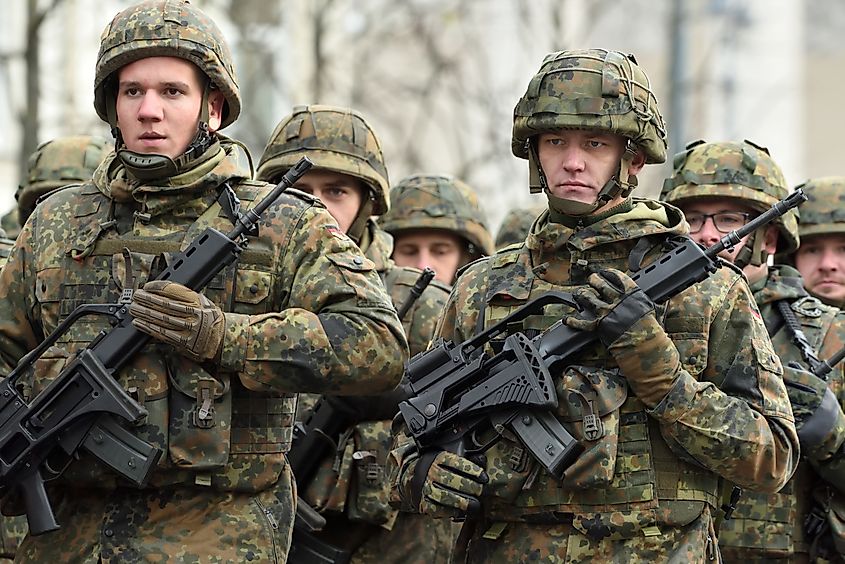
Germany is another European Union country that has pledged to increase its size and spending in the wake of the 2022 invasion of Ukraine. Since conscription ended in 2011, the German military has struggled to recruit new members, but it hopes to add an additional 20,000 personnel in the coming years.
Germany has one of the largest arms industries in the world and has little problem supplying and equipping its military where it needs it. What the German military might lack in size, it makes up for in technological advancements and cutting-edge engineering.
6. Greece - 147,000
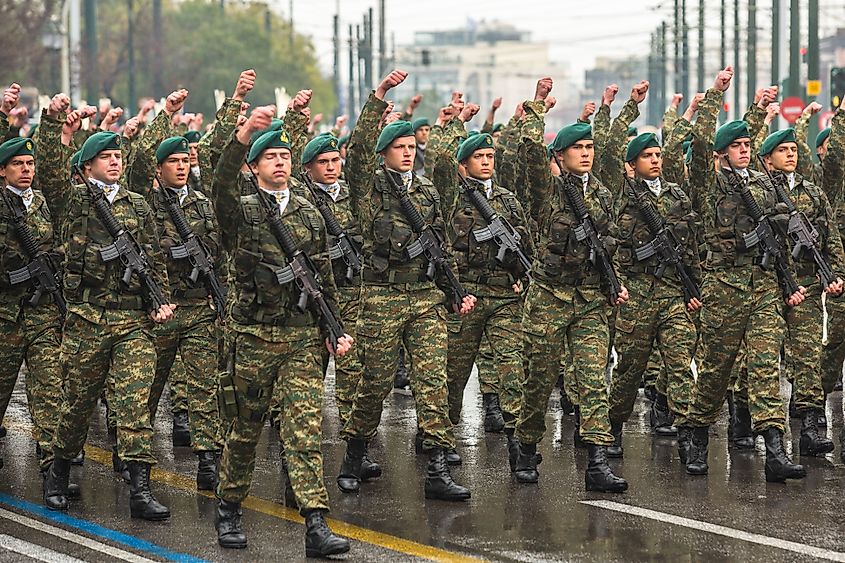
Greece is still one of the few countries in the European Union that still uses conscription to fill out the ranks of its military. In Greece, all men aged 18 and older must serve between 9-12 months in the military. Women are allowed to join voluntarily but are not forced into service.
The Greek military has a large air force and navy, which it uses to patrol its large coastline and various island chains in the Aegean Sea. In 2023, Greece had 635 military aircraft, 193 of which were fighters and interceptors.
7. Romania - 128,000
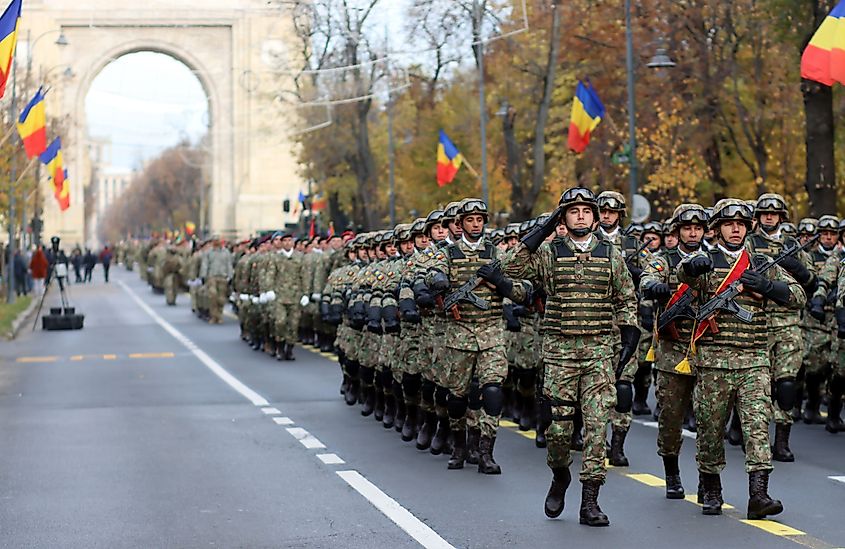
Romania has plans to increase and modernize its military. In early 2024, the Romanian Defense Ministry vowed to increase its standing army by 20,000 soldiers. Rumors of reinstating conscription have been floating around since the war in Ukraine first began, but this has yet to materialize.
The Romanian military struggles to outfit its troops with modern arms and equipment and is largely still reliant on the older and outdated stockpile it accrued during the Cold War.
8. Portugal - 52,000
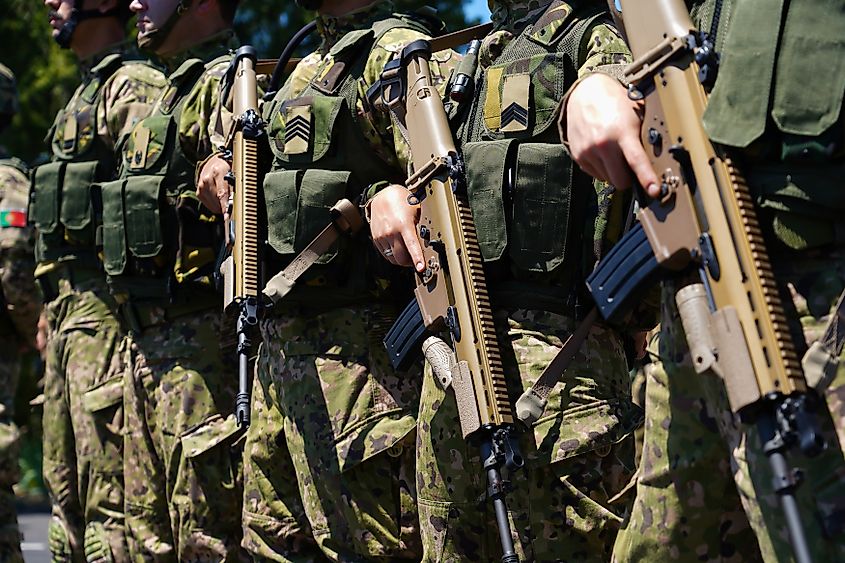
Portugal's military is not large by global standards, but considering its small population of only 10 million, an army of 52,000 is more than enough. Portugal is in the middle of a modernization effort and is trying to give its troops the best equipment money can buy.
In 2023, Portugal spent 5.57 billion euros on modernizing its small military. New armored vehicles, naval vessels, and even combat drones will be purchased. Drone warfare emerged out of the conflict in Ukraine, and modern militaries do not underestimate how effective drones can be on the battlefield.
9. Hungary - 46,000
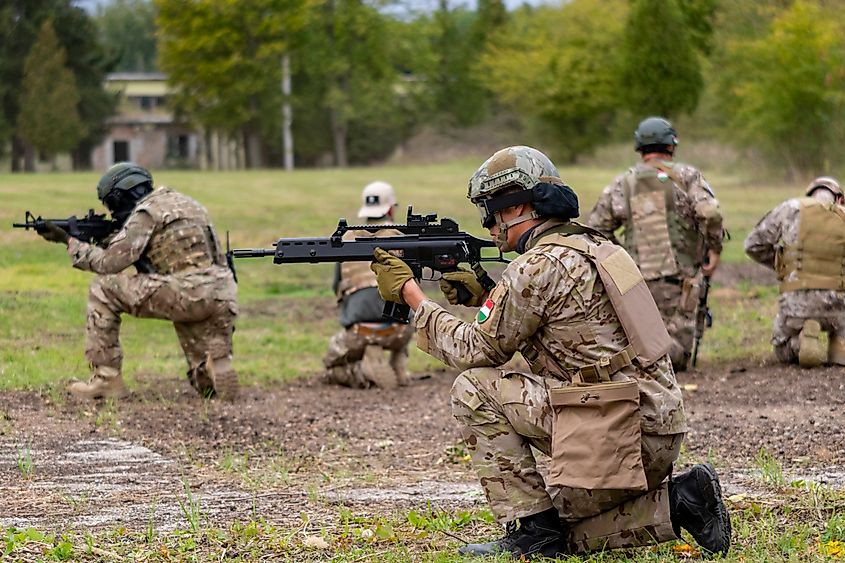
The Hungary military is a small but capable force equipped with a mix of modern weapons from the United States and Germany while utilizing their older Soviet arsenal to its fullest effect.
Hungary has done a good job of making sure its military is well looked after and funded. As a member of NATO, Hungary has spent its recommended 2% of annual GDP on its armed forces and is even projected to exceed that amount by the end of the decade.
10. Netherlands - 41,000
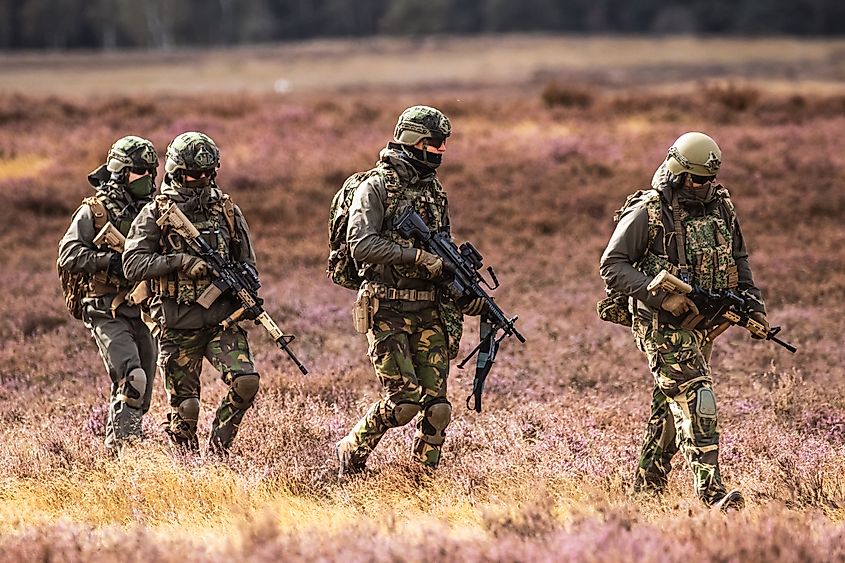
The Netherlands is not a country that is known for its military might. Despite this, it is still able to field a small but capable force that can gel well with fellow EU members and NATO allies.
The Netherlands recently signed a 'military Schengen' agreement along with Germany and Poland. This agreement will help streamline the movement of troops in the event of a war. Like many EU countries, the Netherlands outfit its troops with German and American equipment.
Final Thoughts
The armies of the EU have shrunk in size since the start of the 21st century, but this does not necessarily mean that they have lost their combat effectiveness. Modernization efforts are being made across the continent and the world will likely see countries like Germany and Poland make considerable steps forward in their military capabilities in the coming years.











